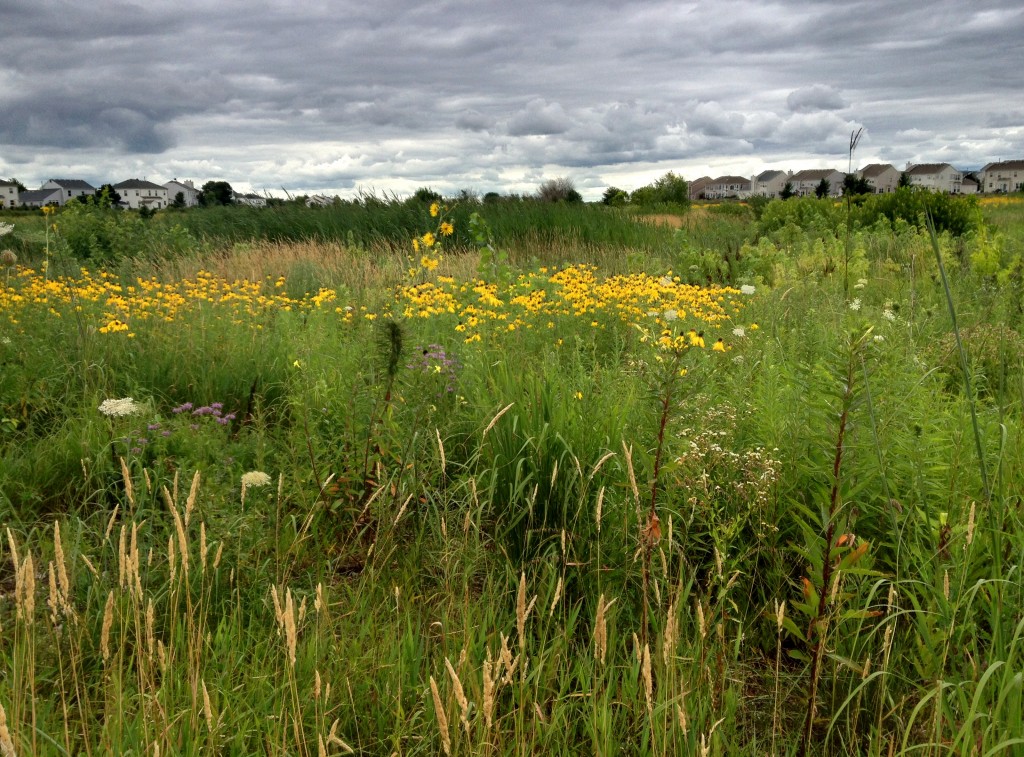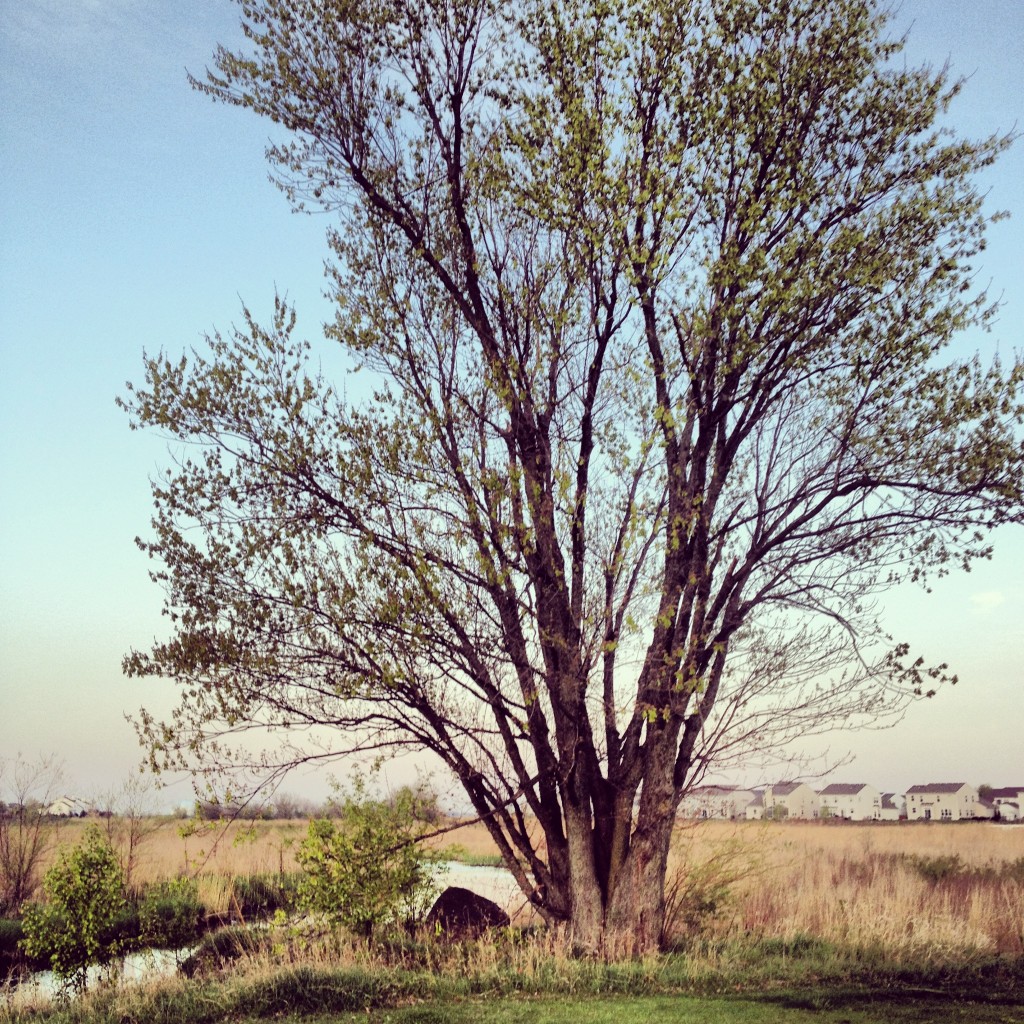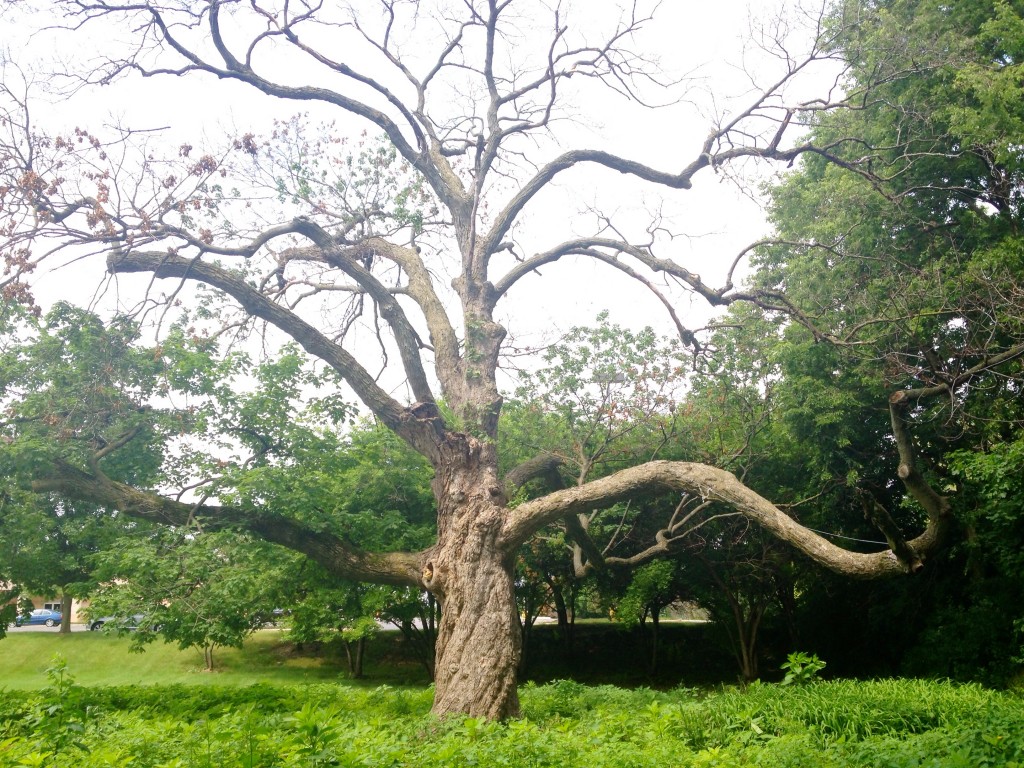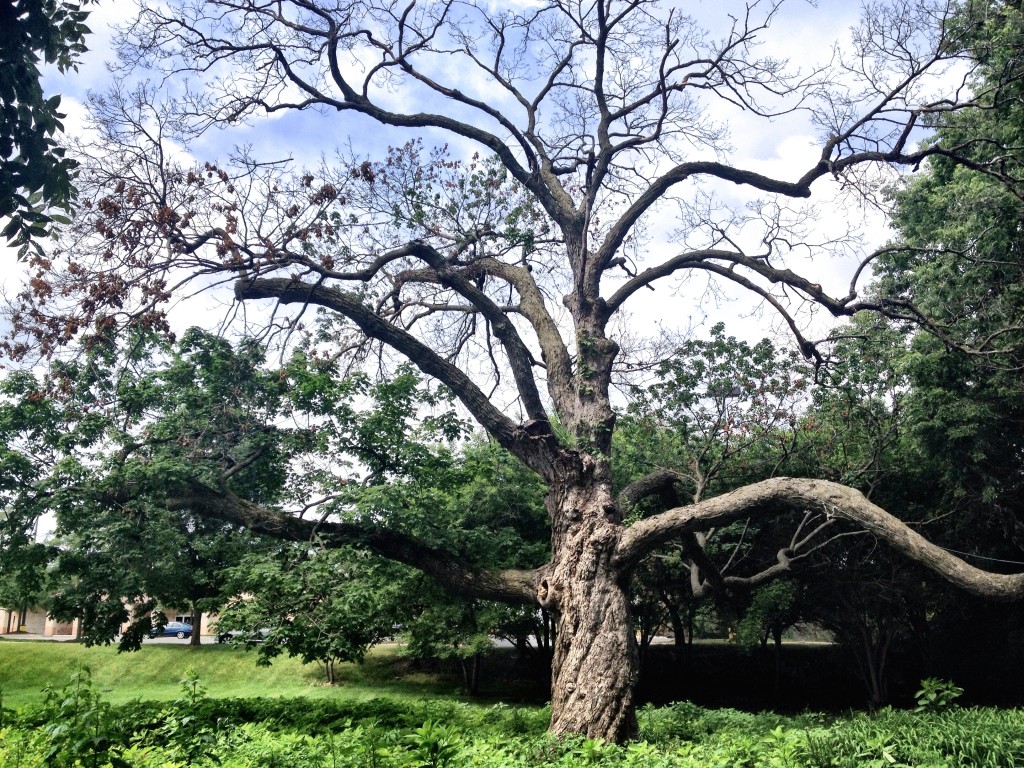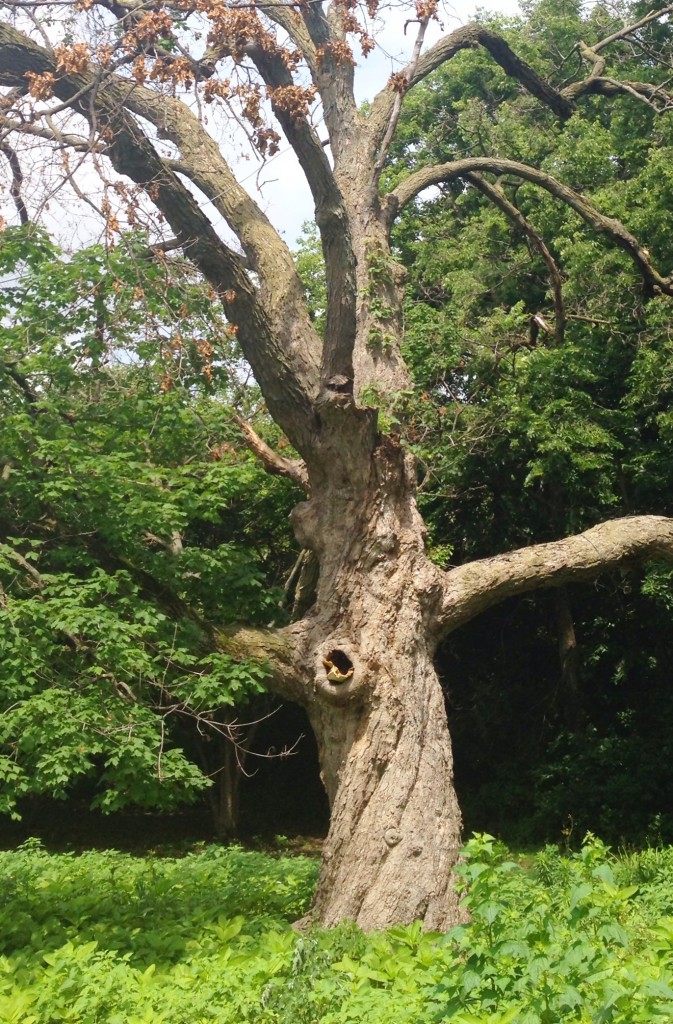In 1820, before any Europeans had settled down in Barbers’ Corners or anywhere around here, Illinois was about two thirds prairie land – no trees, just miles and miles of waving grasses. Trees could be found in small groves around rivers, streams, lakes, and isolated places here and there. But by 1900, the prairie had almost entirely been plowed into farmland. By 1978, what was left of what they call “high-quality” prairie land was less than 2,300 acres, down from over 22 million.
Now, Illinois is covered with corn and soybeans. Residential areas are covered by trees and lawn. But some pockets of prairie can be found along railroads, in and around old cemeteries, and in places it has been intentionally restored, like The Morton Arboretum or the Midewin National Tallgrass Prairie, under construction south of Chicago.
The Bolingbrook Park District has been trying to restore some of its land back to prairie – complete with annual “prairie burns”. (See above, near my house.)
So, old trees are rare. Here’s one near my house, nursed to old age by Lily Cache Creek. It was lucky enough to grow on land that became a park instead of a development.
But across town, on Weber Road, one of our biggest retail thoroughfares, behind these signs and several feet below parking lot level…
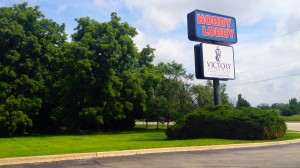
… is a huge sugar maple, said to be about 200 years old.
The Old Sugar Maple Tree doesn’t have a sign or marker, and it’s hard to see if you’re not looking for it. I had no idea it existed until I ran across a reference while I was researching something else. To even get close you have to truck down a short hill from a parking lot. There’s no place to sit and contemplate its age or beauty. Visitors must be few. It’s flanked by some younger trees and a woodsy area, but it seems lonely. It’s not looking great. Unfortunately, the top branches seem to be dying. But it’s quite lovely; it has an elderly, fairy-tale grandeur to it.
But the Bolingbrook Historic Preservation Commission says the Old Sugar Maple was a well known landmark in the 19th century. (Easterners, mostly Vermonters, moved in and started farming this area in the 1830s.) For many years, people held dances under the tree, putting down a temporary wood floor, into the 1920s. People from all around would come and dance and pay 50 cents for the music and all the beer they could drink. (Good thing your horse knew the way home.)
The ground is low here, next to the big swampy floodplain of the DuPage River, and often in winter there would be pools of water standing that would freeze and folks would ice skate. For dances and skating parties, lanterns were hung from the tree’s branches.
Here you can see the space beneath and around the tree a little better, so you can imagine a dance floor or ice rink. Weber Road is running by in the background. The yellow stuff is mulch put down by the Village.
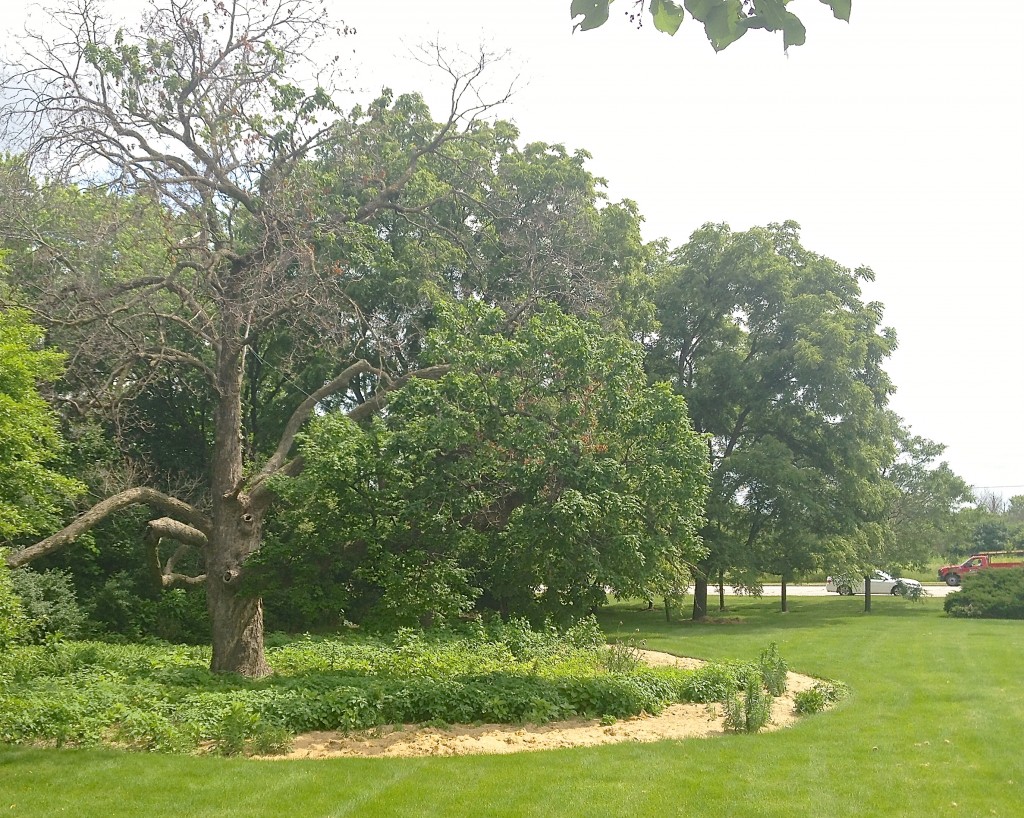
There used to be a one room schoolhouse nearby – Royce School, named after one of the earliest families to settle here, the same time as the Barbers.
Then, in 1970, the owners of this land sold their farm. Some acreage went to the Naperville Park District, some to Bolingbrook, and this particular acreage went to developers. But a mall wasn’t built until the 1990s. Then the Old Sugar Maple made the Chicago news when it was saved from the bulldozers because two teachers mobilized with their students and a Brownie troop. Kmart, the original developer, said they were glad to spare the tree and named the new mall “Maple Park Place.” (The tree is just beyond the upper right corner.)
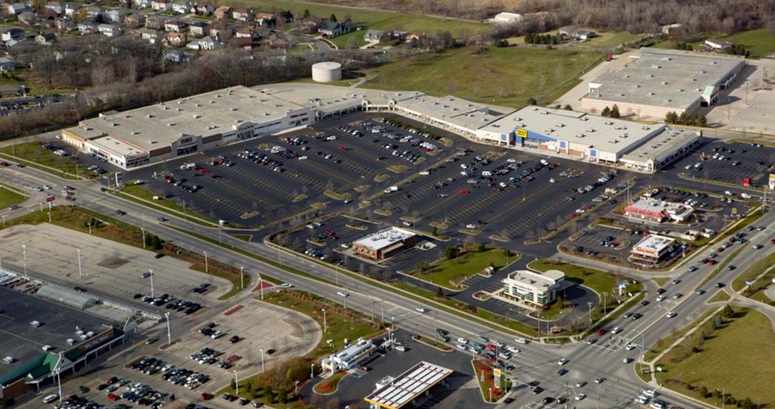
So, the Old Sugar Maple survived.
But unfortunately, twice in the 1990s three of its long, thick, lower limbs were hacked off – two by a feckless landscape worker and one by a vandal. Its branches swoop 20-30 feet outward – and those earlier branches looped right above the ground, apparently. Must’ve been even more elegant-looking then – I wish I could find a “before” photo.
He’s quite an elderly patriarch, this tree. Not sure how much longer he’ll hold on, the way he looks, now. But it’s nice to have met him. He must be the oldest living thing in Bolingbrook. I’m glad the kids and teachers helped Kmart save him from being paved under.
Some more interesting tidbits about sugar maple trees from (where else?) Wikipedia – although this Sugar Maple has proved many of its points wrong:
The sugar maple was a favorite street and park tree during the 19th century because it was easy to propagate and transplant, is fairly fast-growing, and has beautiful fall color. …it proved too delicate to continue in that role after the rise of automobile-induced pollution … Light (or loose) clay soils are also well known to support sugar maple growth. Poorly drained areas are unsuitable, and the species is especially short-lived on flood-prone clay flats.
Morton Arboretum tree experts have told the Historic Commission that this one has lasted so long because of silt from river flooding, strangely. But, as the article points out, pollution doesn’t do Acer saccharum any favors. The constant traffic running nearby, which has increased exponentially over the past twenty years as Naperville and Bolingbrook have grown, must be part of the reason the Old Sugar Maple seems to slowly be dying.
Sources:
Bolingbrook Historic Preservation Commission
The Illinois Department of Natural Resources
